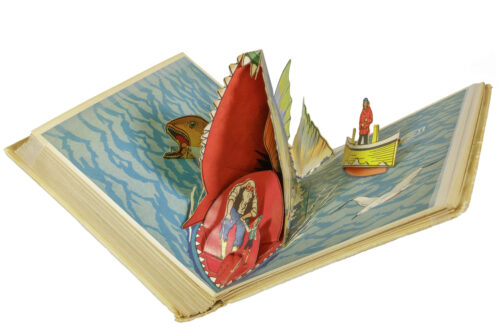
By Judy Carmack Bross
Enter the door with the dragon.
“Since at least the 1100s, readers have been lifting flaps, spinning dials, and opening elaborate three-dimensional spreads in interactive books. Created first for scholars, over time pop-up books have filled new audiences with amazement and wonder.” Suzanne Karr Schmidt, George Amos Poole III Curator of Rare Books and Manuscripts at the Newberry Library and curator of
Pop-Up Books through the Ages, at the Newberry through July 15.
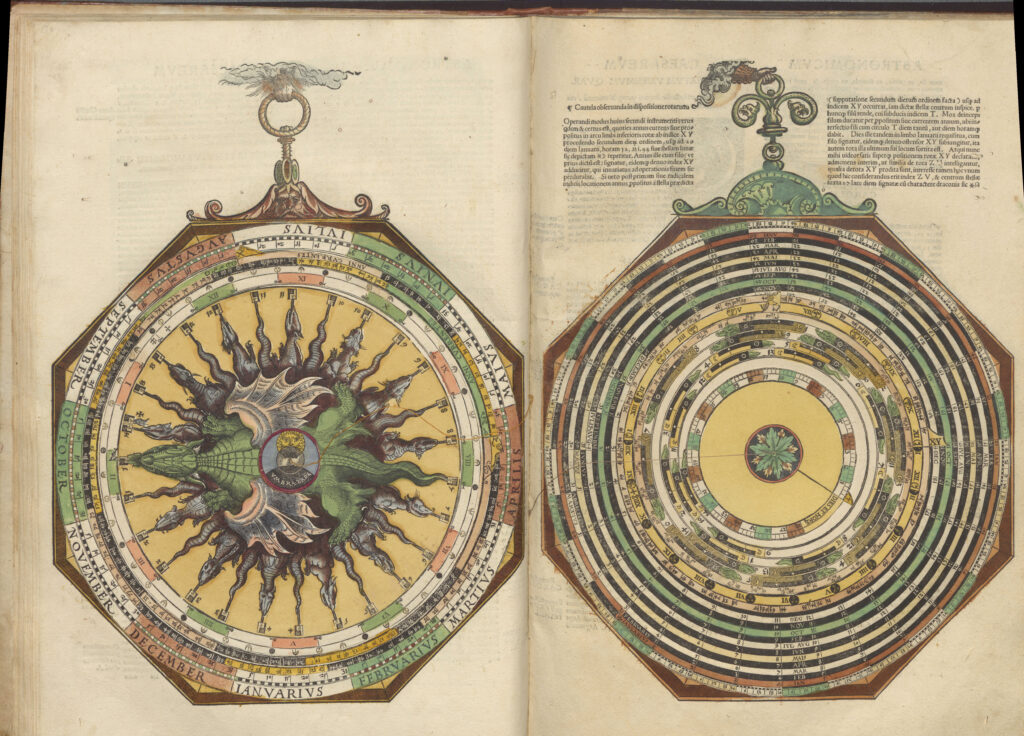
The green dragon on the door to the Trienens Galleries at the Newberry Library immediately meets a visitor’s wishes for the wondrous. Much like Alice down the rabbit hole you are drawn to this rare collection of curiosities. The dragon is from Peter Apian’s 1540 Astronomicum Cæsareum (Imperial Astronomy) from the University of Chicago’s collection and has a dial with multiple movable layers used to make calculations about lunar eclipses. The same colorful woodcut image appears on the title page (without its dials) so the author must have known its lasting ability to impress.
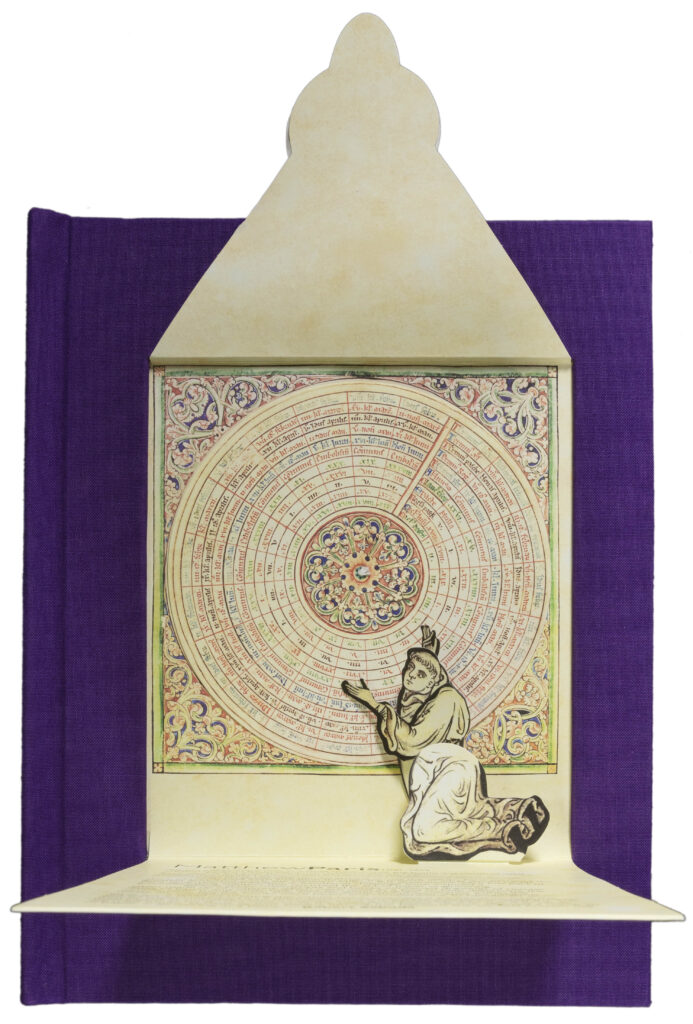 Robert Sabuda after Matthew Paris, Chronica Majora (Major Chronicle), front cover, in Celebration of Pop-Up and Movable Books (2004)
Robert Sabuda after Matthew Paris, Chronica Majora (Major Chronicle), front cover, in Celebration of Pop-Up and Movable Books (2004)
Beloved by an increasingly wide range of users from emperors to
mathematicians to children, interactive books from the Newberry Library’s collection, with three other loans from the University of Chicago and the Art Institute of Chicago, are attracting fascinated visitors who we recently viewed hovering around the books, maps and ephemera including a 1489 astronomical calendar, a 1775 battle map, a 1932 edition of Pinocchio, a three-dimensional model from the Chicago World’s Fair of 1893, a 1612 movable mountain flap marking the revelation to St. Francis of Assisi which invites viewers to be part of the pilgrimage, and so much more.
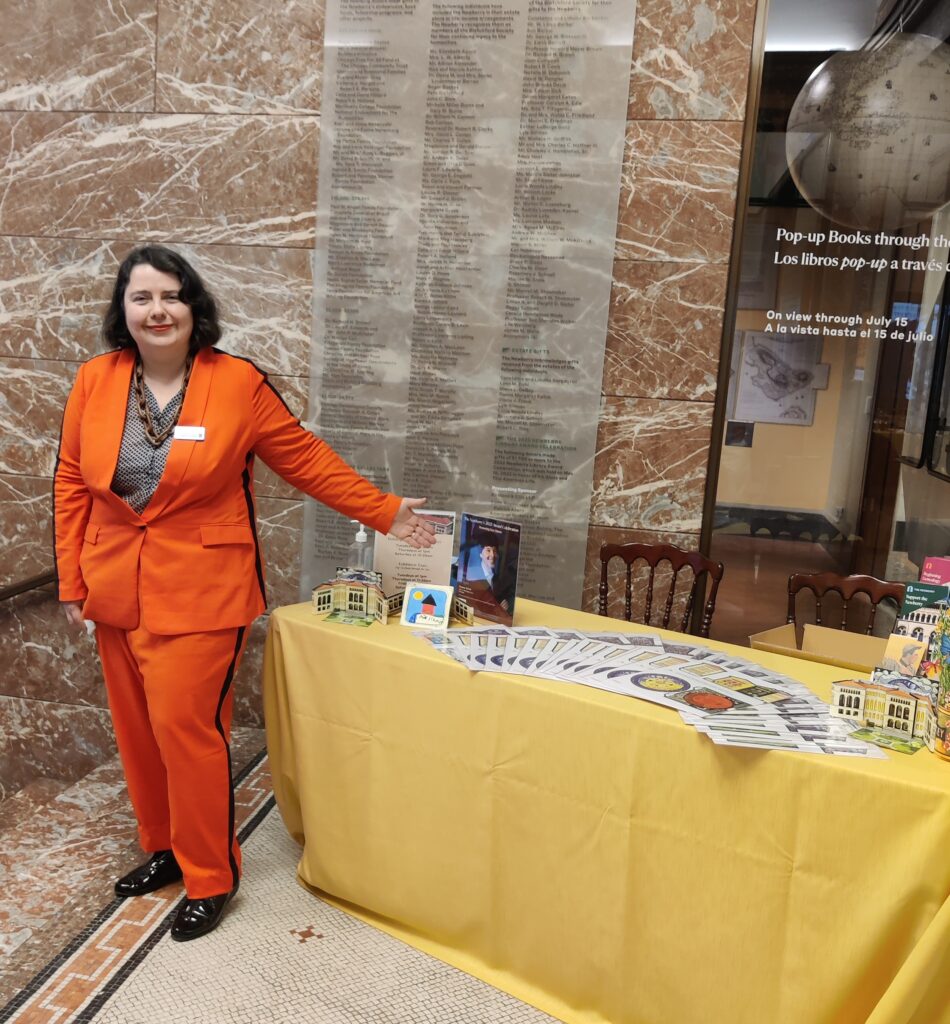 Suzanne Karr Schmidt
Suzanne Karr Schmidt
Karr Schmidt, who wrote her PhD thesis on pop-up books of the Renaissance, believed that these rare Newberry collection items would be a perfect post pandemic presentation. “We have had quite a good number of visitors. The authors of these books created them to impress and they surely have impressed me. The exhibit is filled with little peep shows, optical illusions and much more,” she said, pointing out how the dragon book creator used tiny pearls on silk threads to pinpoint numbers on the beautifully hand-colored astrological dial. “Not only were the most elaborate of these books very expensive, but some were even made for emperors. The creators had a lot riding on their works.”
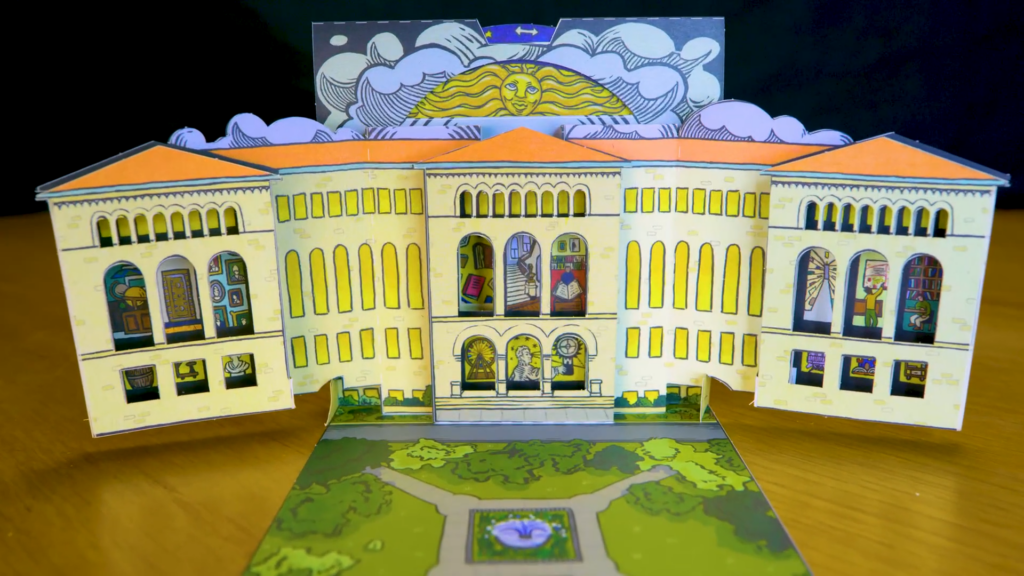
The Newberry Library pop-up
Not only do visitors have interactive opportunities as they view the exhibit, they take home and build their own pop-up Newberry DIY assembly kit created by artist Hannah Batsel and paper engineer Shawn Sheehy. This paper sculpture is filled with tiny details of the Library which opened in 1887.
Before and after images using fold over strips was a sales technique of 18th century landscape architect Humphry Repton, often regarded as the successor to Capability Brown. These early landscape makeovers could be viewed by sliding the fold over a routine landscape miraculously changed by adding plants and even cows.
Tunnel books, viewed from an exterior peephole, created a three-dimensional world such as an 1820 theater in the Newberry collection when you peer down from the box seats to the stage several layers below. A more recent example by Don Widmer showing a fictional whodunnit in the historic Chicago Glessner House is on view in the exhibition.
How to correct a mistake in an earlier version of a very expensive book? Use a flap to cover it up. To excite a viewer’s imagination, why not create a panoramic scene such as a visit to Buffalo Bill’s Wild West Show from 1891, before it appeared at the World’s Columbian Exhibition? And for never forgetting a visit to the World’s Fair of 1893? A pop-up of the Electric Building, seen in this exhibition, is one of four such renderings.

Cats: Ernst Nister, Always Happy Day-In, Day-Out: a Panorama Picture Book (Immer froh tagaus, tagein: ein Panorama-Bilderbuch) (1890s)
For children: not only pop-ups filled with playful kitties from the 1890s, but also punch out paper dolls which were particularly popular in the 1950s.
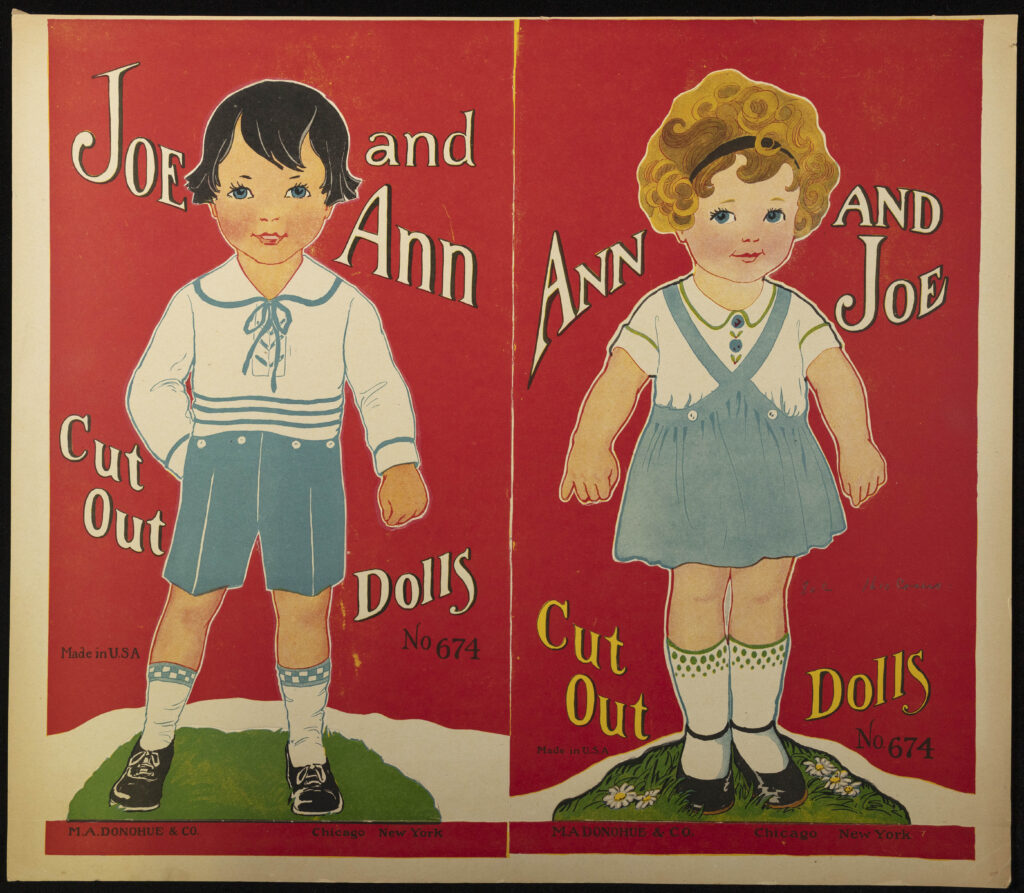
Paper Dolls: M.A. Donohue, publisher, Cut-Out Dolls: Ted and Bob (1950s)
In addition to several books with religious themes in the show, the curator was initially inspired by a little bit of Protestant Reformation propaganda. In the most famous example, now in Munich, you can lift a woodcut of a despicable Borgia Pope and reveal a little devil underneath. Less polemical works by famous German Renaissance artists such as Albrecht Dürer are included in the exhibition as well.
The curator is a self-professed Dürer fan, and including both a book of his and a world map is a rare double treat. Dürer even wrote in his book about how to make three-dimensional globes from flat printed strips called globe gores. Globes, both geographical and astrological, fascinate visitors to the exhibition who can view sheets of engraved or woodcut gores of the earth or heavens before they are mounted onto actual globes. The first room even includes a three-dimensional model reproducing the unique originals in the main gallery.
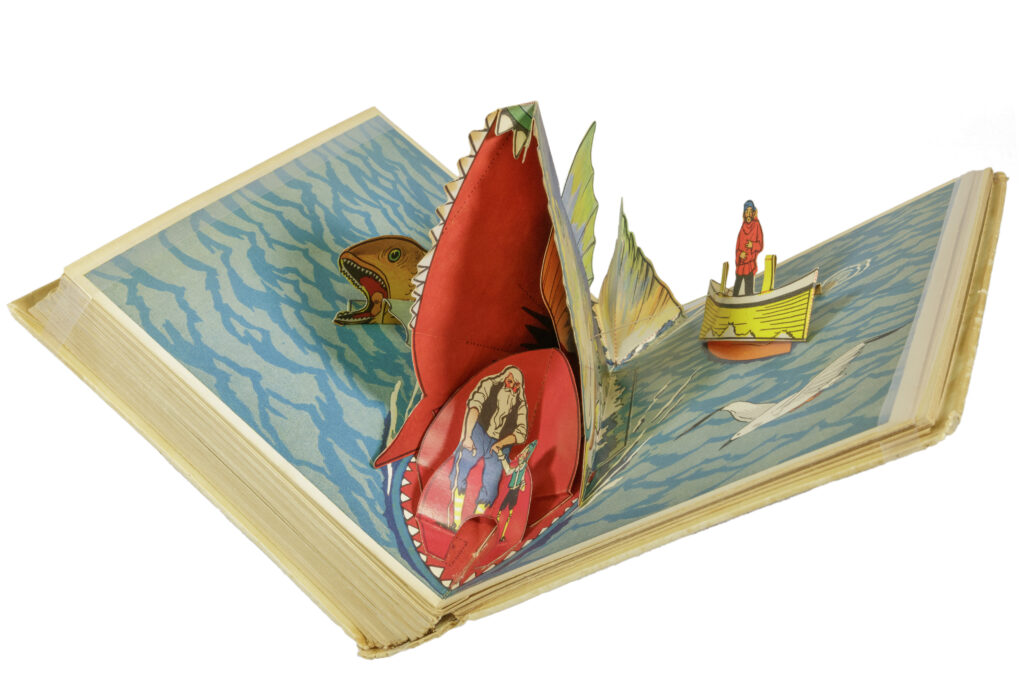
The “pop-up” Pinocchio, 1932. Engineered by Harold B. Lentz.
In the 1930s, Blue Ribbon Books introduced the term “pop-up” to market their books producing popular stories including Puss n Boots, Tarzan, and Pinocchio, using thicker pages to support the stand-up imagery. Included in the Newberry show is the very first trademarked “pop-up,” including a Pinocchio scene with Geppetto and his little wooden boy emerging from the whale’s mouth.
“Pop-ups have become big business,” said Karr Schmidt. “There is a Movable Book Society, a non-profit that supports exhibitions like this one and provides a worldwide forum for its members.”
Classic Chicago Magazine columnist Katherine Harvey, a collector of pop up books for many years, recently visited the Newberry Library show. She also shared details of her collection and a few photos.
 |
 |
“I have been collecting pop-up books for many years and am ever intrigued by the creativity of pop up artists and the endless subjects covered, both real and imagined; the fact that these gems are mass produced and the price of most volumes very reasonable is remarkable. The alphabet and numbers are subjects that are often depicted and it is interesting to see how different artists make the mundane exciting. ABC 3D by Marion Bataille is an award-winning volume that makes the alphabet come alive in 3D. Gerard Lo Monaco’s Magique Circus Tour is extraordinary, and his charming Animal Menagerie pop-up is available in the Newberry bookstore as are some other pop-ups. Lo Monaco is one of the most talented pop-up artists and created a pop-up for the Sonia Delaunay exhibit at the Musee d’Art Moderne de la Ville de Paris some years ago.
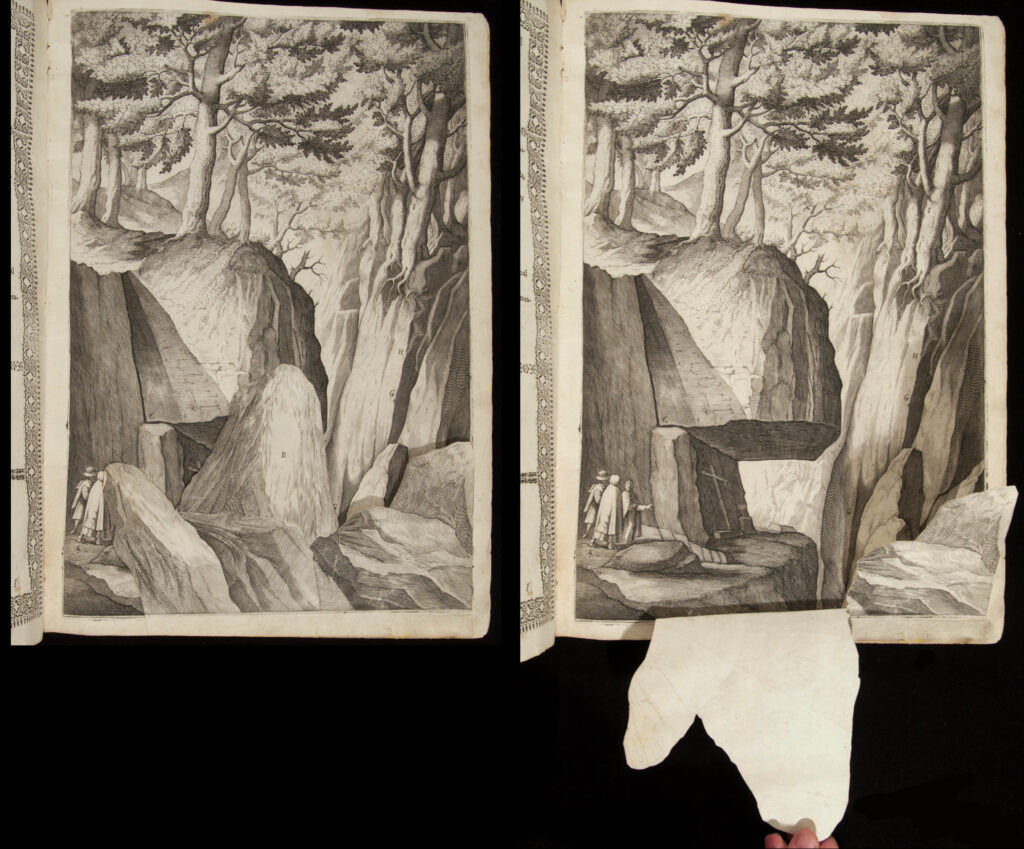
Fra Lino Moroni, author, after Jacopo Ligozzi, artist, Descrizione del sacro monte della Vernia (Description of the sacred mountain of La Verna) (1612) |

Felipe Dávalos, artist; Maria Eugenia Guzmán, paper engineer, La Virgen de Guadalupe (The Virgin of Guadalupe) (1998) |
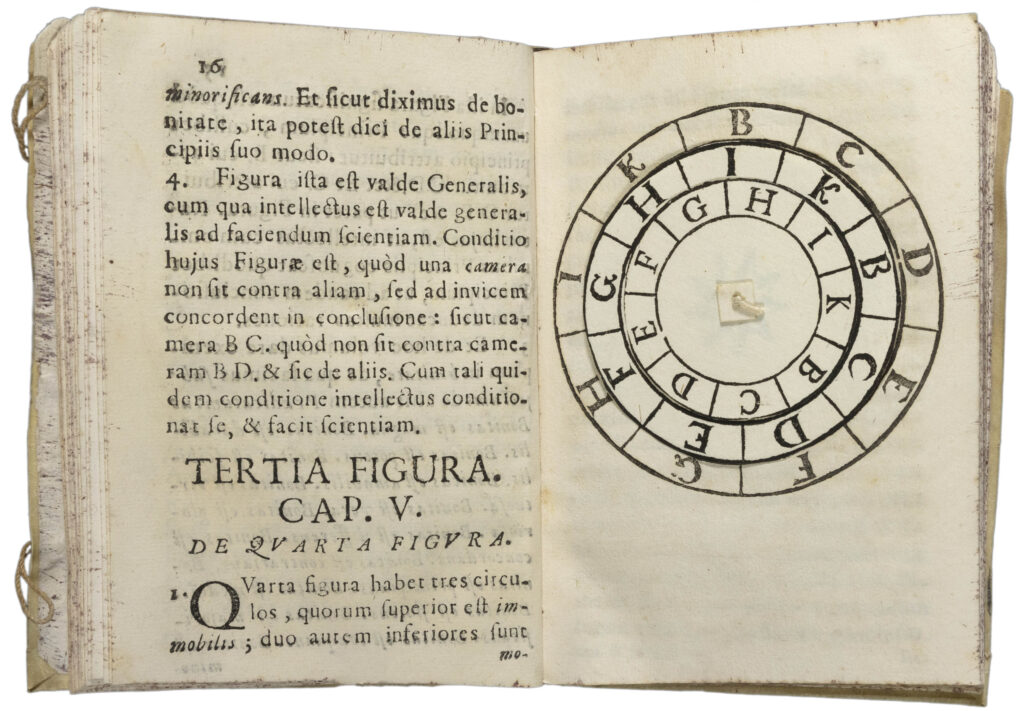
Religious alphabet dials: Raymund Llull, Ars brevis (Brief art) (1744) (originally late 13th c.) |
“While most volumes in my collection are whimsical, there are a few serious ones such as Moby Dick, The Raven, and The Little Prince plus pop ups of artists. To give you an idea of how the
pop-up has managed to infiltrate all levels of our culture, even Hermes has a pop-up. There are variations of the pop-up such as laser cut volumes and cutouts in three dimensions; the fables of La Fontaine seem to lend themselves to this presentation. The French in particular have embraced the pop-up with the charming tale of Le Prince de Motordu (The Prince of Twistedwords) series used in schools to show how words can sound almost the same but have radically different meanings such as drapeau (flag) and crapaud (toad).”
Pop-Up Books through the Ages runs through July 15 at the Newberry Library. For further information visit newberry.org.



